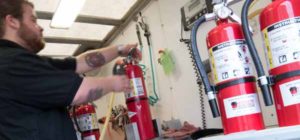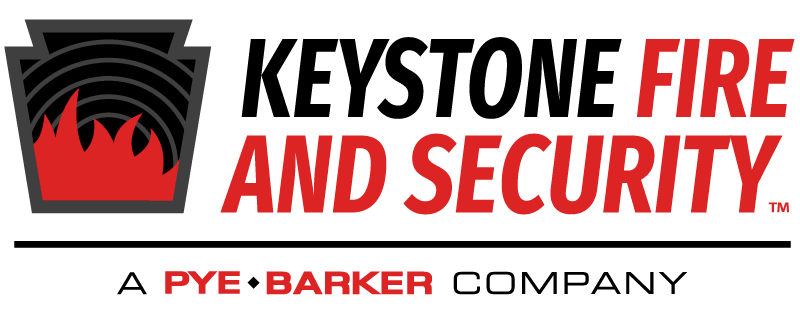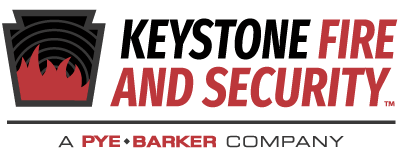You rely on your fire system inspector to make sure that every part of your system is functioning properly. Even small equipment failures can threaten your safety as well as the safety of your employees and your facility. Did you ever wonder why there is such a difference in the cost of service when comparing one company to the next? Unfortunately, there are some service companies that cut corners, enabling them to garner your business at a lower cost. This cheats you out of a thorough inspection that helps save lives. Others offer an attractive price but add all kinds of items to the final invoice.
Here are some of the most commons ways that unscrupulous fire protection service providers try to take advantage of their customers.
Fire Extinguishers
Actual Inspection Price Exceeds the Original Quote
 Fire extinguisher inspections are notoriously prone to companies that cheat clients out of thorough inspections with bait and switch service. Fire extinguisher inspections are typically priced per extinguisher or per tag. Because of this, customers are led to believe that everything that needs to be done to inspect a given extinguisher can be done for that quoted price.
Fire extinguisher inspections are notoriously prone to companies that cheat clients out of thorough inspections with bait and switch service. Fire extinguisher inspections are typically priced per extinguisher or per tag. Because of this, customers are led to believe that everything that needs to be done to inspect a given extinguisher can be done for that quoted price.
However, some of the more unprincipled companies will inspect an extinguisher for a very low price and add back things like the cost of the tag, the pull pin, the flag seal and a host of other labels, parts and pieces. By the time the customer receives the bill, the actual price per extinguisher is significantly higher than the original quote.
Manipulating the Verification of Service Collar
Stored pressure fire extinguishers that require a 12-year hydrostatic test are also required to have a 6-year maintenance. The 6-year maintenance is an internal inspection, which ensures that the cylinder isn’t corroding from the inside out.
An inspector must depressurize the extinguisher, empty its contents, and look inside to make sure there isn’t any rust. Done properly, the technician must remove the valve and siphon tube of the extinguisher. A mylar ring, called a verification of service collar, is placed over the neck of the cylinder before the extinguisher is refilled and the valve is re-installed. This ring identifies the name of the service provider and date of service, and acts as proof that the 6-year maintenance was performed. This collar cannot be installed unless the valve has been completely removed from the extinguisher. Corner-cutters have been known to cut the ring in order to get it around the neck of the extinguisher, and repair the cut ring with tape so that the inspection looks like it’s been done properly.
Fire Alarm Systems
To properly test and certify a building fire alarm system, every device connected to the system must be functionally tested. A typical commercial or industrial building can have hundreds of connected devices – smoke detectors, heat detectors, pull stations, waterflow and tamper devices, horns and strobe lights. Many of these devices require the use of ladders or lifts for testing because of where they’re mounted in the building.
Building owners and managers can tell if their inspectors are cutting corners just by paying attention to how long the inspection takes to complete and by knowing how many devices are in their systems.
We tell our customers to use the “rule of four”: it takes about four minutes to test each device. Multiply the number of devices in your system by 4 minutes, and if your inspector is finished well under that time, it is doubtful your inspector has checked every device. Also, are they providing any documentation that proves that each device operated during the test? Many of today’s systems have the ability to print out a history of tests and activations. Ask for this to be sure.
We’ve seen pricing from disreputable competitors as low as ten-percent of the actual cost to perform the work. This is possible when the technician only tests one or two devices per loop or per zone, operating on the fallacy that if the device they test works, all the others must also work.
Emergency Lights
Emergency lights must be functionally tested for 90 minutes on backup power. This test is appropriately called a 90-minute burn test. Corner cutters tend to press the test switch and use that as the functional test for an emergency light. The problem is that this is a momentary test that doesn’t deeply discharge the batteries.
Similarly to fire alarm testing, if the inspector is finished testing the emergency lights in less than 90 minutes, you can be sure the inspector didn’t do the test properly.
Sprinkler Systems
Occasionally, our sprinkler technicians will service a sprinkler system that has a current inspection tag from another service provider. They won’t be able to open the sprinkler valve because it’s seized shut from age and disuse. This is a big red flag that indicates that the sprinklers have obviously not been properly tested in years, and that the building owner has not been served well by his current fire protection company. Another telltale sign that a sprinkler system has not been properly maintained is when the pressure gauges, which must be changed every 5 years, are well past their expiration dates.
There’s an old adage: “You get what you pay for.” But in the examples given here, what these customers have paid for is a potential tragedy waiting to happen if their life safety equipment fails to function when needed. There is a difference between service providers, and maybe price is not the best yardstick to use when it comes to life safety and property protection.

